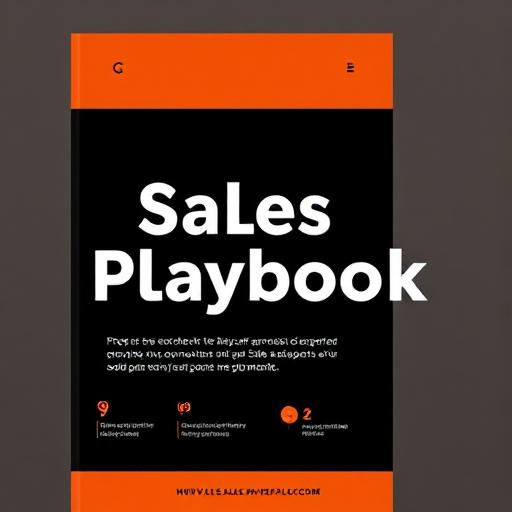How to Create a Sales Playbook That Your Team Will Use
- ClickInsights

- Jul 17
- 4 min read
Most sales playbooks gather dust. They're too vague, too lengthy, or clogged with generic recommendations no one on your team will ever implement. If your sales reps can't leverage it in an actual conversation in five minutes of reading, then it's not a playbook—it's a report. The following is a targeted guide to creating a playbook that gets used in live calls, refined regularly, and relied upon by your team.

Begin With One Product, One Customer, One Objective
The worst mistake that most teams make is an attempt to cover all products and all customers in a single playbook. This creates ambiguity, not clarity. Rather, start with a focused approach. Select one product that you would like your team to sell. Identify the specific type of customer the product is intended for—say, mid-range SaaS businesses with $5 million to $50 million in annual revenue. Then have one singular goal: maybe to schedule demos, not close deals. This specificity establishes the foundation. It eliminates the noise, reduces variables, and provides your sales team with a clear, actionable starting point.
Define What "Good" Looks Like at Each Stage
Calling sales phases such as Prospect, Discovery, Demo, and Close without specifying what needs to take place within each one is almost worthless. Salespeople don't require stage labels—they require rules of engagement. Consider the Discovery phase. It's not satisfactory to say "discover pain points." That is interpreted in different ways by different reps. A good playbook outlines exactly what needs to occur before a deal can progress. In Discovery, a rep can determine the customer's primary pain, verify that the purchaser has control over the budget, and know if there is a competitor in place. Until those occur, the deal shouldn't move forward. Having clearness avoids bad deals filling up the pipeline and gives a clear qualification standard.
Give Reps Exact Language, Not Just Advice
Reps don't require generic reminders to "ask better questions" and "build rapport." They need actual words to say. If you desire your reps to ask about pain on the customer's part, write out the exact question: "What's one thing your current tool makes harder than it should be? "Giving reps actual phrasing doesn't make them robotic. Quite the contrary—it provides them with a solid foundation on which to build. Once they learn what works, they'll naturally make it their own.
But without that starting point, they're improvising every time, and that leads to inconsistent outcomes and slower onboarding.
Only Include the Top 5 Objections. It is tempting to include every objection you've ever heard, but that overwhelms reps with too much information. Focus only on the five objections that regularly kill deals. For each, explain what the objection truly means. For instance, when a customer says, "It's too pricey," they might not be complaining about price at all—perhaps they just don't yet perceive the value. Train your reps in dealing with this in simple steps: validate the issue, inquire about the background, and reframe the discussion in terms of time saved or risk mitigation. A well-executed objection keeps the dialog going.
A badly executed one kills the sale
Place the Playbook Where Reps Already Work. A static PDF in a shared drive won't assist your team at the moment. Your playbook has to reside where your reps already do. That might be a wiki like Notion, an enablement platform like Guru, or within your CRM tool, such as Salesforce or HubSpot. In the event your team is using Gong or Chorus, tie actual call snippets back to reinforce the playbook in context. Reps don't read playbooks cover to cover. They look for quick fixes when they're at a loss. If it's not available within two clicks, it won't be used.
Accessibility isn't an afterthought—it's what makes the playbook usable
Test It with Two Mid-Level Reps
Don't roll out your playbook to the entire team at once. Begin small. Provide the initial version to two mid-level reps for two weeks. Top reps won't follow it, and new hires don't have enough experience to offer helpful feedback. Mid-level performers are your best test group because they reflect what's scalable. Ask them what worked, what confused them, and what they skipped. Use this feedback to fix weak parts before rolling it out broadly.
This controlled test phase improves quality and increases buy-in when the full team adopts it.
Assign Ownership and Update It
Even the greatest playbook will tank if it gets stale. Your market will change. Your product will evolve. Messaging will shift. Assign one individual each month to read and update the playbook. This might be a team lead, an enablement manager, or a senior rep. Their responsibility is to refresh talk tracks, eliminate stale advice, and include fresh examples. When your sales team understands that the playbook is living and breathing, they will use it and have confidence in it. A dead document is forgotten.
A living resource is integrated into your sales culture.
Last Thought: If It's Not Used, It's Useless
A sales playbook no one uses is worth nothing, regardless of how great it looks. If it won't make your team better on their next call, then it doesn't belong in your company. Keep your playbook concise, straightforward, and centered around real tasks your reps do every day. Develop it like a product—one that your team will rely on and come back to repeatedly. When you do, it's more than a document.
It's your competitive advantage.



Searching for the right Link Dewalive was frustrating until I found the official one. It loads fast and always takes me to the secure homepage. Definitely share this with your friends for reliable and easy access every time. Link Dewalive